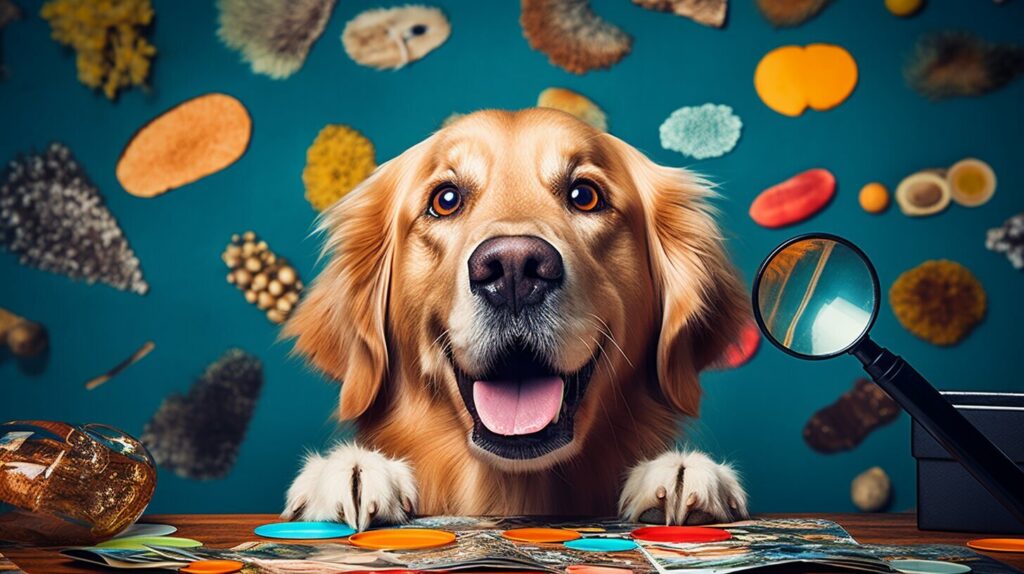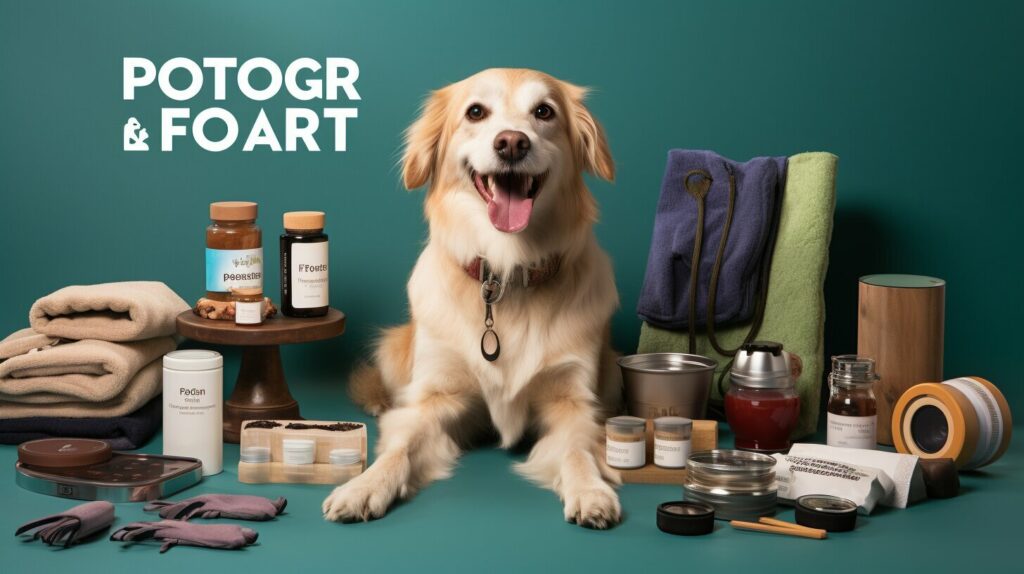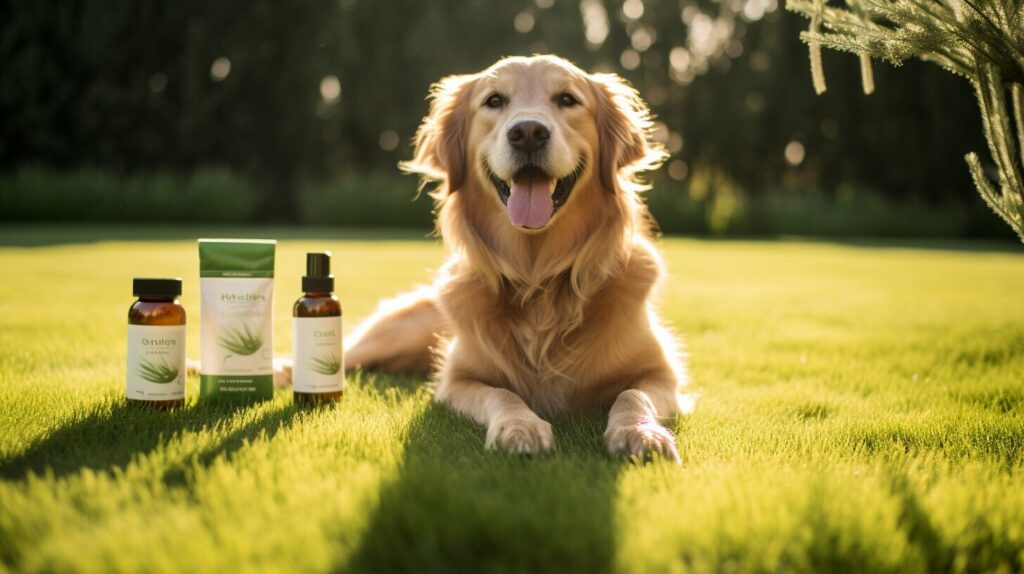If you’re a dog owner, you may have heard of anal glands, but you may not know exactly what they are or why they matter. Understanding anal glands on dogs is crucial to ensuring the overall health and well-being of your furry friend.
Anal glands are small, sac-like structures that are located on either side of a dog’s anus. These glands are responsible for producing a fluid that has a strong scent and is used to mark territory and communicate with other dogs.
While anal glands serve an important purpose, they can also cause problems for dogs. If the glands become blocked or infected, it can lead to discomfort, pain, and even serious health issues.
In this article, we’ll provide a complete guide to anal glands on dogs, including how to recognize when there may be a problem, treatment options, and preventive measures you can take to keep your dog healthy and happy.
Key Takeaways:
- Anal glands on dogs are small sac-like structures located on either side of the anus that produce a fluid with a strong scent.
- If anal glands become blocked or infected, it can lead to discomfort, pain, and serious health issues for dogs.
- In this guide, we’ll cover the various aspects of understanding anal glands on dogs, including common problems and treatment options.
What are Anal Glands?
Anal glands, also known as anal sacs, are small glands located on either side of a dog’s anus. These glands play an important role in a dog’s body by secreting a liquid substance that helps them mark their territory and communicate with other dogs. The secretion from these glands contains pheromones that enable dogs to convey information such as their age, sex, and health status.
In addition to serving as scent glands, anal glands also aid in bowel movement regulation by lubricating the feces. When a dog defecates, the pressure applied to the glands causes the liquid substance to be released, thereby facilitating the passage of stool through the rectum and anus.
While anal glands are essential to a dog’s body, they can also lead to various problems if not functioning correctly. Dog owners should be aware of the signs and symptoms of anal gland problems to ensure their pet’s well-being.
Understanding Dog Anal Gland Problems
If you own a dog, it’s essential to understand anal gland problems, as they can cause discomfort and pain for your pet. The anal glands are located on either side of a dog’s anus and produce a strong-smelling fluid that helps with scent marking. However, when these glands become blocked, infected, or inflamed, it can result in a range of issues.
One common problem is an impaction where the glands become too full, causing discomfort and pain. Another issue is an infection or abscess, which can be painful and require immediate treatment. Additionally, dogs can develop more severe and chronic conditions such as anal gland tumors or disease.
While any dog can experience anal gland problems, some breeds are particularly prone due to their physical characteristics or genetic predisposition. Breeds such as Cocker Spaniels, Basset Hounds, and Bulldogs are among those more at risk.
Your dog may display signs of anal gland problems such as scooting, excessive licking of the anal area, and a foul odor. Additionally, constipation, diarrhea, or changes in bowel movements can also indicate an anal gland issue.
If you suspect your dog is experiencing anal gland problems, the best course of action is to consult your veterinarian. They will be able to diagnose the issue and provide proper treatment, such as manual expression, medication, or surgery. It’s important not to attempt to express your dog’s anal glands at home unless you have been trained to do so, as it can be painful and potentially make the problem worse.
Preventive measures can also help reduce the likelihood of anal gland problems in your dog. Maintaining a healthy diet and weight and providing regular exercise can aid in healthy bowel movements. Regular grooming, including cleaning the anal area, can also help keep the glands functioning correctly.
Overall, understanding anal gland problems and taking appropriate precautions can help ensure your dog’s well-being and prevent unnecessary pain and discomfort.
Recognizing Symptoms of Anal Gland Issues
If you notice your dog scooting across the floor or licking excessively around their rear end, it could be a sign of impacted anal glands. Other symptoms to look out for include a foul odor, swelling or discharge from the anal area, and discomfort or pain when defecating.
In some cases, anal gland issues can lead to infection or abscesses. Signs of an anal gland infection may include redness, warmth, and tenderness around the anal area, as well as fever and lethargy. If left untreated, an anal gland abscess can rupture and cause further complications.
It’s important to address any symptoms of anal gland problems promptly to prevent further discomfort and potential health issues for your dog.
Treatment Options for Anal Gland Problems
If your dog is experiencing anal gland problems, there are several treatment options available, depending on the severity of the issue.
Manual Expression: This is the most common treatment for anal gland problems and involves manually expressing the glands to release the blocked or impacted contents. However, caution should be taken to avoid causing injury or infection to the dog.
Medication: In some cases, medication may be prescribed to help reduce inflammation or infection in the anal glands, such as antibiotics or steroids.
| Anal Gland Surgery | Pros | Cons |
|---|---|---|
| Anal Gland Surgery: |
|
|
Anal Gland Surgery: In more severe cases, where other treatments have been unsuccessful, surgery may be required to remove the anal glands entirely. This is generally considered a last resort due to the risks involved with surgery and the potential for complications during recovery. However, it can provide long-term relief from chronic anal gland issues.
If you suspect your dog is experiencing anal gland problems, it is essential to consult with your veterinarian as soon as possible for proper diagnosis and treatment. Delaying treatment can result in more severe and painful complications.
How to Express Your Dog’s Anal Glands
If you notice your dog exhibiting the signs of anal gland problems, such as scooting or excessive licking, it may be time to express their anal glands. While this procedure is typically done by a veterinarian, you can learn how to do it at home with proper guidance. Here’s a step-by-step guide on how to express your dog’s anal glands:
- Prepare: Put on gloves and have clean towels or wipes on hand.
- Position: Position your dog in a way that allows you to get access to their anus. This may require having someone hold your dog or using a leash or harness to control their movements.
- Locate glands: Using your fingers, locate the glands on either side of the anus. They should feel like small, firm sacs.
- Apply pressure: Press gently on the gland from the 4 o’clock to 8 o’clock position for about 10-15 seconds. This should cause the gland to release its contents.
- Clean up: Use the towels or wipes to clean up any material that is released.
- Repeat: Repeat the procedure on the other gland if necessary.
It’s important to note that expressing your dog’s anal glands too frequently can cause irritation and lead to further problems. If you’re unsure about how frequently to do this procedure or are uncomfortable doing it yourself, consult with your veterinarian for guidance.
Preventing Anal Gland Issues in Dogs
Keeping your dog’s anal glands healthy should be a top priority for any pet owner. Fortunately, there are some simple preventive measures you can take to minimize the chances of your dog experiencing anal gland problems.
Dietary Changes
One of the most effective ways to prevent anal gland problems in dogs is through dietary changes. Feeding your dog a high-fiber diet can help regulate bowel movements, making it easier for your dog to express their anal glands naturally. Additionally, increasing your dog’s water intake can also help keep their stools soft and prevent constipation.
Regular Grooming
Regular grooming can also help prevent anal gland issues in dogs. Keeping your dog’s coat clean and free of mats can reduce the amount of bacteria and debris that can become trapped in their anal glands. Additionally, trimming the hair around your dog’s anus can help prevent blockages and reduce the risk of infection.
Regular Vet Check-Ups
Regular check-ups with your veterinarian can also help prevent anal gland issues in dogs. Your vet can monitor the health of your dog’s anal glands and help identify any potential issues before they become severe. Additionally, your vet may recommend routine anal gland expression as a preventive measure for dogs that are prone to anal gland problems.
By incorporating these preventive measures into your dog’s daily routine, you can help ensure their anal glands stay healthy and free of issues. However, if you notice any concerning symptoms, such as excessive scooting or licking, it’s important to seek veterinary help promptly. With proper care and attention, you can keep your furry friend happy and healthy for years to come.
Seeking Veterinary Help for Anal Gland Problems
If you notice any signs of dog anal gland problems, such as scooting, licking, or discomfort, it’s vital to seek veterinary help promptly. Your veterinarian will examine your dog’s anal glands and determine the best course of treatment.
In some cases, the anal glands may need to be manually expressed, which can be risky if not done correctly. Attempting to express your dog’s anal glands at home can result in rupturing the glands or causing infection.
If your dog has a more severe case of anal gland disease, such as an anal gland abscess, surgery may be necessary to remove the affected gland. Your veterinarian will guide you through the process and ensure your dog receives the necessary pain management and aftercare.
Delaying veterinary care for anal gland problems can result in more significant health issues for your dog, including infection and severe discomfort. Be sure to monitor your dog’s anal gland health regularly and seek veterinary care if you notice any signs of anal gland disease.
Anal Gland Issues in Specific Dog Breeds
While any dog breed can experience anal gland issues, some breeds may be more prone to these problems than others. Breeds with a naturally thick and oily coat, such as Cocker Spaniels and Bulldogs, may be more susceptible to anal gland problems due to the increased likelihood of clogged pores. Additionally, smaller breeds, such as Chihuahuas and Toy Poodles, may have smaller anal glands that are more prone to blockages and infections.
It is important to note that even breeds that are not typically prone to anal gland problems can still experience issues. Regular monitoring and maintenance of your dog’s anal glands, regardless of breed, can help prevent or detect any problems early on.
Anal Glands: A Key Element of Your Dog’s Well-Being
As a dog owner, it’s essential to keep your furry friend healthy and comfortable. One of the most overlooked aspects of a dog’s health is the anal glands. These small, pea-sized sacs located on either side of the dog’s rectum play a vital role in keeping your dog’s bowels healthy and their stools easy to pass.
While anal gland problems may not seem like a significant issue, they can cause severe discomfort and lead to more significant health issues if left untreated. Some of the common problems include anal gland infections, impacted anal glands, and anal gland abscesses.
The good news is that keeping your dog’s anal glands healthy is relatively easy. A balanced diet with enough fiber can help regulate bowel movements, which can prevent anal gland issues. Additionally, regular grooming, including cleaning the perianal area, can help reduce bacterial buildup and prevent infection.
If your dog has frequent anal gland problems, you may need to consider more proactive measures. Your veterinarian can advise on treatments, including changing your pet’s diet, expressing the anal glands manually, prescribing medication, or even surgery.
Ultimately, keeping your dog’s anal glands healthy and problem-free is an essential part of their overall well-being. By recognizing the signs of anal gland problems and taking appropriate measures, you can help keep your dog healthy, happy, and comfortable.
Conclusion
Understanding your dog’s anal glands is an essential part of being a responsible pet owner. Regularly monitoring and addressing any issues promptly can prevent discomfort and serious health problems for your furry friend.
If you notice any signs of anal gland problems, such as scooting or excessive licking, it’s crucial to seek veterinary help. Your veterinarian can properly diagnose the issue and recommend the appropriate treatment option.
Preventive measures such as dietary changes and regular grooming can also go a long way in minimizing the chances of anal gland problems in dogs. And for those who want to take matters into their own hands, our step-by-step guide on how to express your dog’s anal glands at home is a helpful resource.
Remember:
Your dog’s anal glands are an integral part of their overall health and well-being. Stay vigilant, respond promptly to any issues, and work closely with your veterinarian to provide the best possible care for your furry friend.
FAQ
Q: What are anal glands?
A: Anal glands are small sacs located on either side of a dog’s anus that secrete a smelly liquid. They serve various functions, including marking territory and aiding in bowel movement lubrication.
Q: What problems can occur with a dog’s anal glands?
A: Dogs can experience several issues related to their anal glands, such as inflammation, infection, abscesses, and impaction. These problems can cause discomfort and may require treatment.
Q: How can I recognize if my dog has anal gland issues?
A: Look out for symptoms such as scooting on the floor, excessive licking or biting of the anal area, a foul odor, swelling, and signs of discomfort or pain during bowel movements.
Q: What are the treatment options for anal gland problems?
A: Treatment options for anal gland problems in dogs include manual expression by a veterinarian, medication to reduce inflammation or fight infection, and in severe cases, surgical procedures.
Q: How can I express my dog’s anal glands at home?
A: Expressing a dog’s anal glands should be done by a professional, such as a veterinarian or a groomer. Attempting to do it at home without proper knowledge and experience can cause harm to your dog.
Q: How can I prevent anal gland issues in my dog?
A: Maintaining a healthy diet and weight, providing regular exercise, and ensuring proper hygiene through regular grooming can help prevent anal gland problems in dogs.
Q: When should I seek veterinary help for my dog’s anal gland problems?
A: If you notice any signs or symptoms indicating anal gland issues in your dog, it is important to consult a veterinarian for proper diagnosis and appropriate treatment.
Q: Are certain dog breeds more prone to anal gland problems?
A: Some dog breeds, such as Bulldogs, Cocker Spaniels, and Pugs, are more prone to anal gland problems due to their particular anatomy and genetics.
Q: How important are anal glands for a dog’s well-being?
A: Anal glands play a crucial role in a dog’s overall health and well-being. Proper maintenance and addressing any issues promptly can contribute to your dog’s comfort and overall quality of life.



